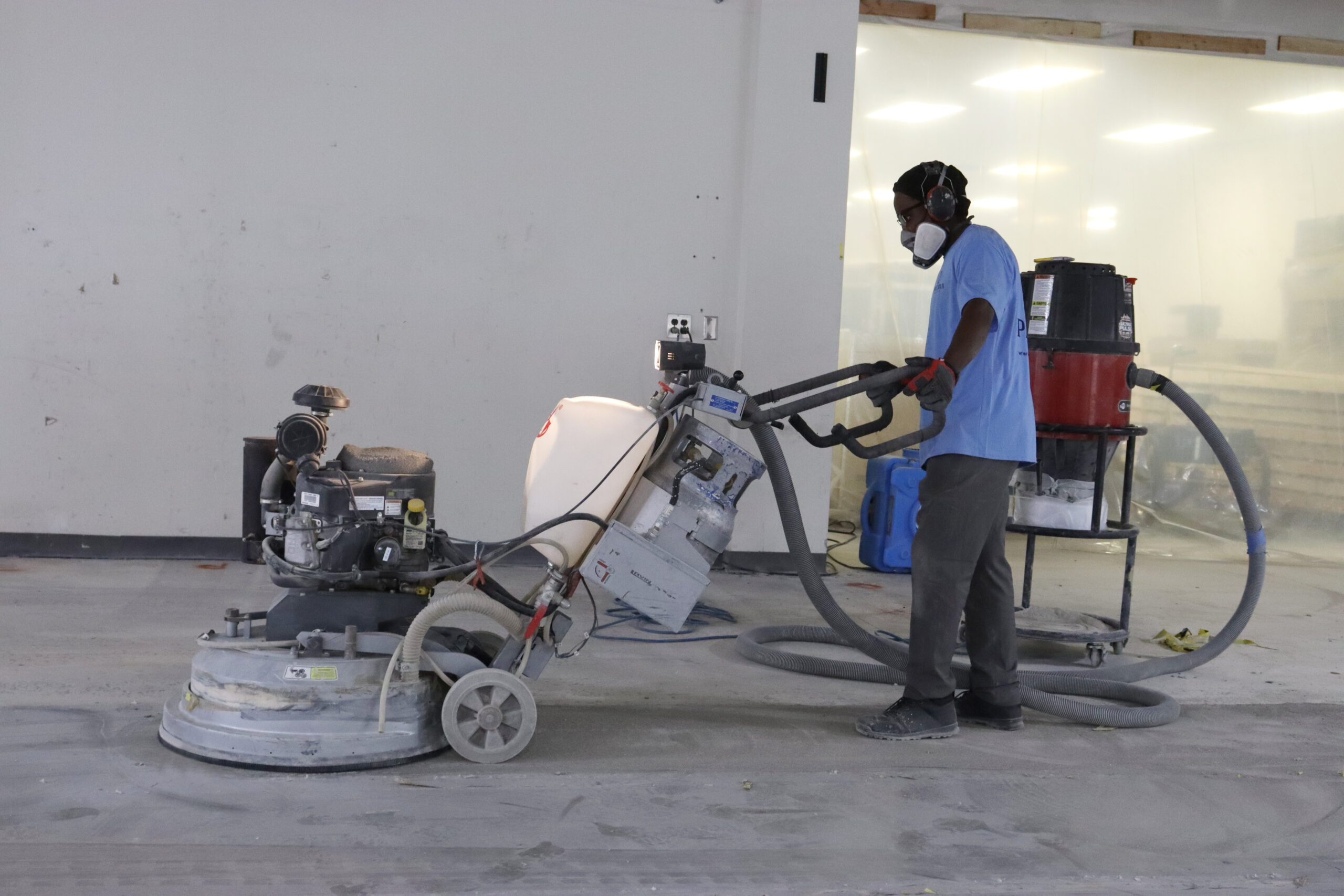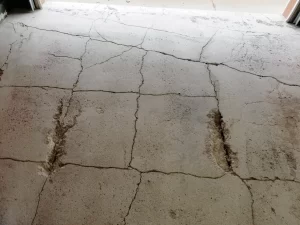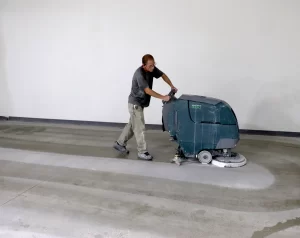Many contractors who install epoxy or polyaspartic floor coatings will boast short installation times as a selling point. We all have busy schedules and time is always a precious commodity, but that rule goes both ways. When doing anything, you have the option to do it quickly, or do it well, but often not both. Investing the proper time into your project is always the best way to guarantee a quality product.
Coating a concrete floor is not as simple as it may sound. One might be inclined to imagine that applying a floor coating is little different than painting with a roller, which could not be further from the truth. Preparing a floor for coating is the most fundamental and important step in the process. If the substrate is not properly cleaned and textured for the application of the coating, it will not adhere correctly, and the coating will be prone to early failure. Grinding or shot blasting concrete are both popular options for floor preparation that require specialty equipment, and safety measures. Preparing concrete with either a grinder or a shot blaster generates large amounts of potentially dangerous silica dust that must be mitigated to maintain a safe working environment within the project area. It is also important to take the time to properly seal off the project area from the rest of the home for both cleanliness and safety.
Beyond simply cleaning and conditioning concrete for coating is repair. Installing a floor coating over unrepaired damage will not only affect the floor aesthetically, but will also significantly shorten the lifespan of the coating. Pop-outs, cracks, and scaling all have to be repaired to ensure that your concrete won’t be falling apart beneath your new floor coating over time. Most repairs are as quick and easy as filling damage with cementitious materials before coating, whereas more time consuming repairs may include the installation of carbon fiber stitching to add rigidity and support where needed. Allowing time for repairs ensures that not only will the finished product look better, it will also last longer.
Focusing on fast completion of the project means that details are often overlooked. You don’t want to step on a sharp piece of poly flake the first time you take your shoes off on your new floor. It’s important to take the time and inspect the finished product before calling a project complete. Even the best flooring installer will find small imperfections in their work. Leaving such imperfections behind can contribute to early wear or damage to the floor coating. Proper inspection and touch up at the completion of an installation takes time, but is always well worth the investment.





